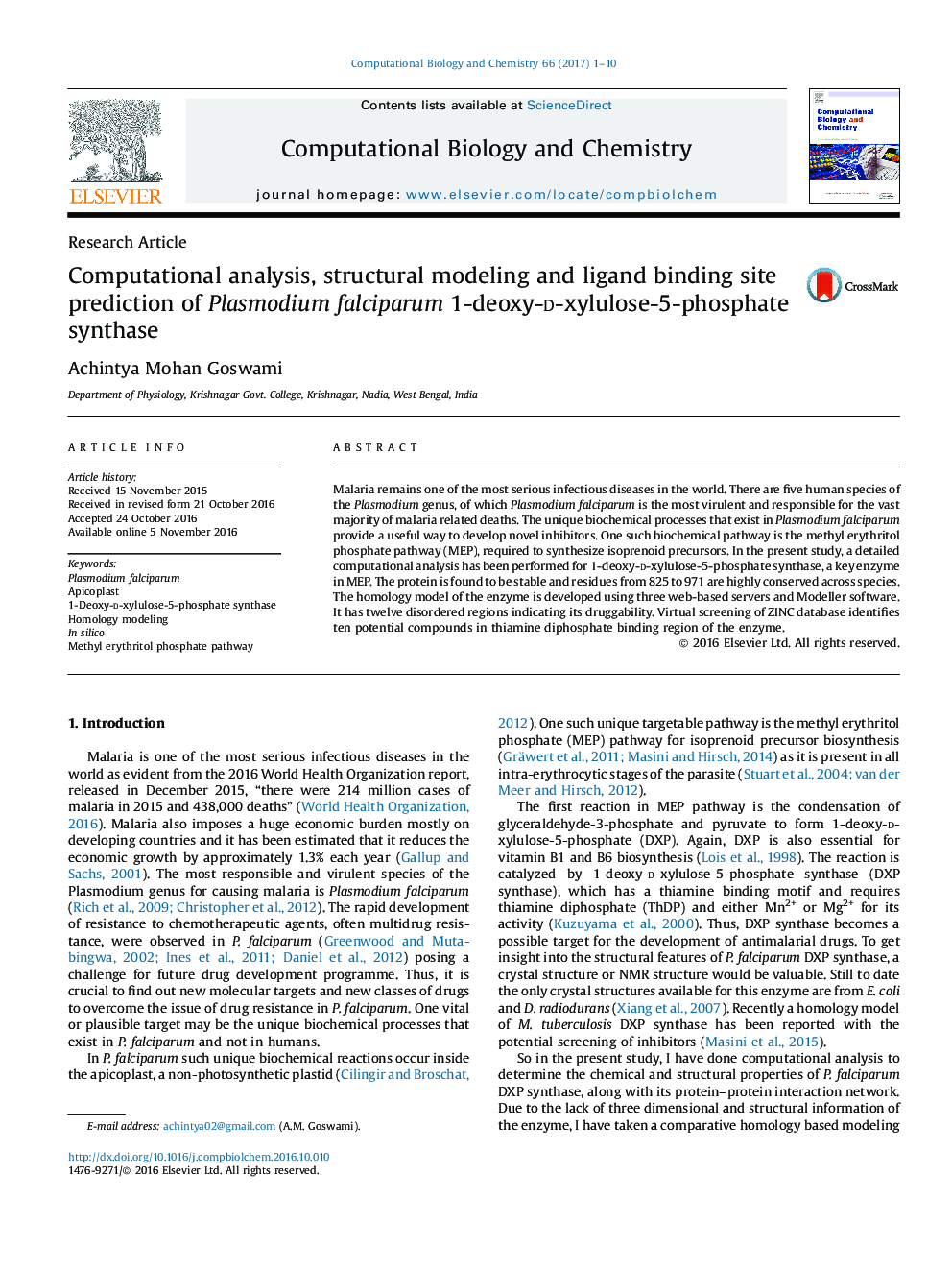| Article ID | Journal | Published Year | Pages | File Type |
|---|---|---|---|---|
| 6451371 | Computational Biology and Chemistry | 2017 | 10 Pages |
•Plasmodium falciparum 1-deoxy-d-xylulose-5-phosphate synthase (DXP synthase) is predicted to be stable and residues forming pyrimidine binding pocket are evolutionary conserved.•Comparative homology based modeling of DXP synthase is carried out using HHPred, Raptor X and (PS)2 web server and Modeller to get structural insights.•Theoretical validation of model reveals that structure generated by Modeller provides better results.•Presence of five cavities along with magnesium and thiamine diphosphate binding residues of DXP synthase are predicted in details.•Virtual screening of ZINC database identifies ten potential compounds in thiamine diphosphate binding region of the enzyme.
Malaria remains one of the most serious infectious diseases in the world. There are five human species of the Plasmodium genus, of which Plasmodium falciparum is the most virulent and responsible for the vast majority of malaria related deaths. The unique biochemical processes that exist in Plasmodium falciparum provide a useful way to develop novel inhibitors. One such biochemical pathway is the methyl erythritol phosphate pathway (MEP), required to synthesize isoprenoid precursors. In the present study, a detailed computational analysis has been performed for 1-deoxy-d-xylulose-5-phosphate synthase, a key enzyme in MEP. The protein is found to be stable and residues from 825 to 971 are highly conserved across species. The homology model of the enzyme is developed using three web-based servers and Modeller software. It has twelve disordered regions indicating its druggability. Virtual screening of ZINC database identifies ten potential compounds in thiamine diphosphate binding region of the enzyme.
Graphical abstractFigure optionsDownload full-size imageDownload high-quality image (197 K)Download as PowerPoint slide
